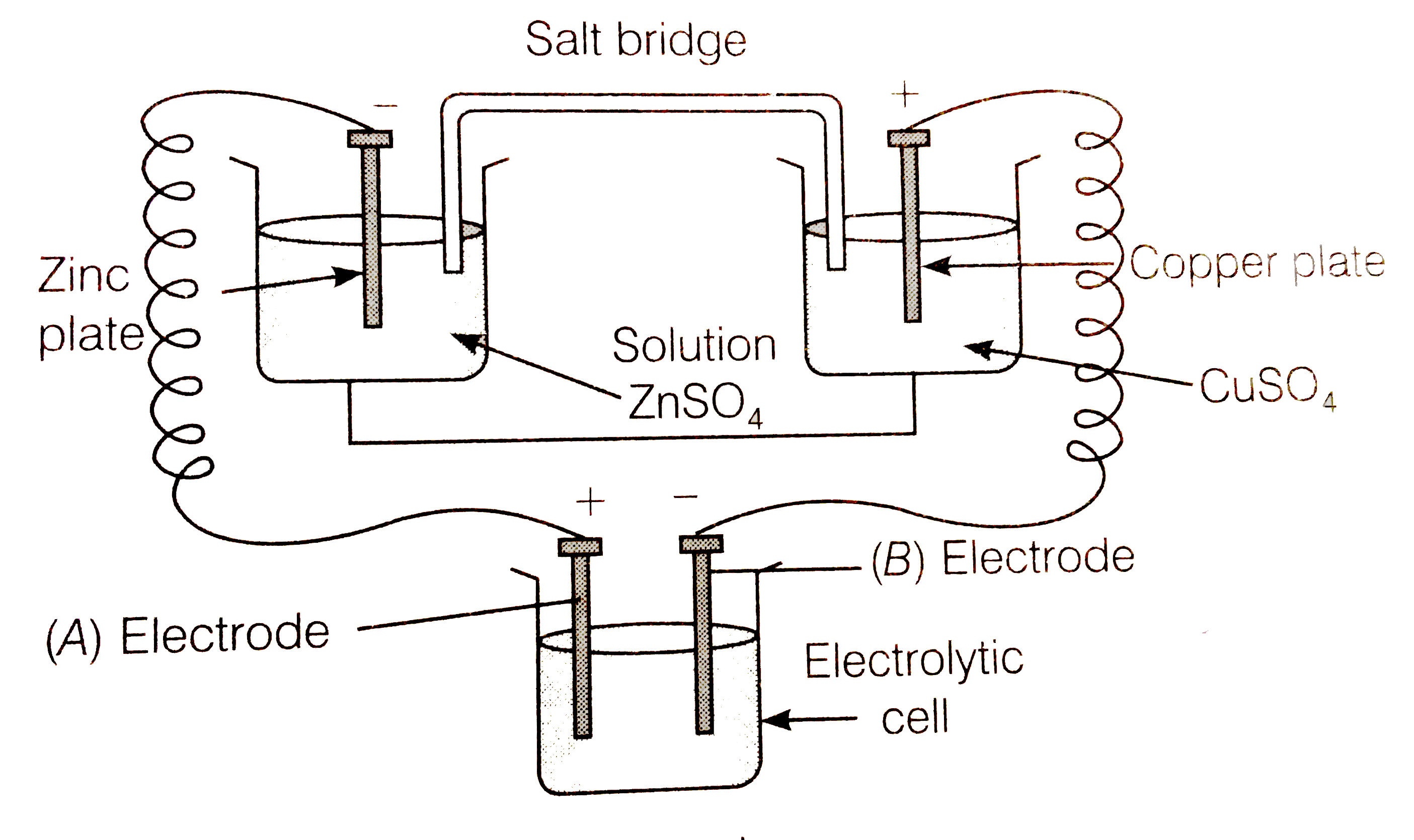If an electrochemical cell is made in which current does not flow, what it suggest ?
To address the question, "If an electrochemical cell is made in which current does not flow, what does it suggest?", we can break down the explanation into clear steps:
1. Understanding Electrochemical Cells:
- An electrochemical cell consists of two half-cells: one acts as the anode (oxidation half-cell) and the other as the cathode (reduction half-cell).
2. Current Flow in Electrochemical Cells:
- Current in an electrochemical cell is the flow of electrons from the anode to the cathode. This flow occurs due to a difference in electrode potentials between the two electrodes.
3. Condition for Current Flow:
- For current to flow, there must be an electrical imbalance, meaning the electrode potentials of the anode and cathode must be different. This difference allows electrons to move, creating a current.
4. Situation When Current Does Not Flow:
- If current does not flow in the electrochemical cell, it indicates that there is no potential difference between the anode and cathode. This means that the electrode potentials are equal.
5. Implication of Equal Electrode Potentials:
- When the electrode potentials are the same, electrical neutrality is maintained, and there is no driving force for the electrons to move from one electrode to the other.
6. Conclusion:
- Therefore, if an electrochemical cell is made in which current does not flow, it suggests that the electrode potentials are equal, leading to the maintenance of electrical neutrality.
Summary:
If current does not flow in an electrochemical cell, it indicates that the electrode potentials are the same, resulting in no electrical imbalance and thus no movement of electrons.
- An electrochemical cell consists of two half-cells: one acts as the anode (oxidation half-cell) and the other as the cathode (reduction half-cell).
- Current in an electrochemical cell is the flow of electrons from the anode to the cathode. This flow occurs due to a difference in electrode potentials between the two electrodes.
- For current to flow, there must be an electrical imbalance, meaning the electrode potentials of the anode and cathode must be different. This difference allows electrons to move, creating a current.
- If current does not flow in the electrochemical cell, it indicates that there is no potential difference between the anode and cathode. This means that the electrode potentials are equal.
- When the electrode potentials are the same, electrical neutrality is maintained, and there is no driving force for the electrons to move from one electrode to the other.
- Therefore, if an electrochemical cell is made in which current does not flow, it suggests that the electrode potentials are equal, leading to the maintenance of electrical neutrality.
If current does not flow in an electrochemical cell, it indicates that the electrode potentials are the same, resulting in no electrical imbalance and thus no movement of electrons.
Topper's Solved these Questions
- NCERT BASED EXERCISEBOOK - CENGAGE CHEMISTRY ENGLISHCHAPTER - NCERT BASED EXERCISEEXERCISE - Electrolysis, Batteries , and Rusting
20 Videos
- NCERT BASED EXERCISEBOOK - CENGAGE CHEMISTRY ENGLISHCHAPTER - NCERT BASED EXERCISEEXERCISE - Conductivity of Ionic Solutions
8 Videos
- NCERT BASED EXERCISEBOOK - CENGAGE CHEMISTRY ENGLISHCHAPTER - NCERT BASED EXERCISEEXERCISE - Short Answer Type Questions(ElectroCHMmical Cell)
4 Videos
- GRIGNARD REAGENTS AND ORGANOMETALLIC REAGENTSBOOK - CENGAGE CHEMISTRY ENGLISHCHAPTER - GRIGNARD REAGENTS AND ORGANOMETALLIC REAGENTSEXERCISE - Exercises Archives (Linked Comprehension)
1 Videos
- NUCLEAR CHEMISTRYBOOK - CENGAGE CHEMISTRY ENGLISHCHAPTER - NUCLEAR CHEMISTRYEXERCISE - Archives Subjective
13 Videos
Similar Questions
Knowledge Check
An electrochemical cell an behave like an electrolytic cell when
AEcell=0BEcell>EextCEext>EcellDEcell=EextWhat does the principle of variance suggest?
AMajor changes in training helps in sports performance.BMinor changes in training helps in sports performance.CNo changes in training helps in Sports performanceDNone of the above
Daniel cell is electrochemical cell , which of the following statement is true about it ?
View SolutionIn an electrochemical cell that function as a voltaic cell:-
View SolutionIn an electrolytic cell current flows
View SolutionAn electrochemical cell an behave like an electrolytic cell when
View SolutionConsider the following diagram in which an electrochemical cell is coupled to an electrolytic cell. What will be the polarity of electrodes 'A' an d 'B' in the electrolytic cell?

View SolutionWhy electrochemical cell stops working after some time?
View Solution
